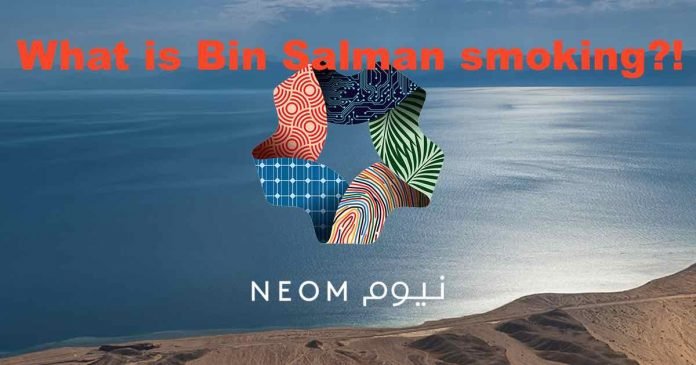
Editor’s note: In a recent article for the best Muslim current events magazine in English, I opined on the “reforms” of Saudi Clown Prince Bin Salman:
The BS PR message is pure obsequious beggary, “We are modernizing, diversifying, privatizing, embracing neoliberalism, and Hollywoodism and Zionism. We will lick the boots of banksters, kowtow to Netanyahu, grope Illuminati orbs with Trump, and build futuristic cities peopled by female robots in bikinis. So don’t worry, we aren’t even pretending to be Muslims anymore. Give us more weapons and money!”
The part about bikini-clad robots (robotesses?) was a reference to Neom, the gigantic neoliberal bordello-in-the-desert that Bin Salman dreams of building. That fantastic scheme, reminiscent of Coleridge’s allegedly opium-fueled lines “In Xanadu did Kublai Khan a stately pleasure dome decree,” offers good evidence that rumors of BS’s addiction to designer drugs probably understate the case.
Laurent Guyénot’s new article, posted below for the first time anywhere, explores the Biblical roots of this bizarre Zio-Wahhabi project. Frankly, I’m not sure anyone can really understand this stuff without a good stash of whatever Bin Salman is smoking. But it’s definitely worth a try! (The article, not the stash.)

THE BIBLICAL GEOPOLITICS OF NEOM
Laurent Guyénot
In a recent interview, Saudi Crown Prince Mohammad bin Salman (MBS) said about Iran’s leader Ayatollah Ali Khamenei, that he “makes Hitler look good. […] Hitler tried to conquer Europe, The supreme leader is trying to conquer the world.” In the interview, he also said that Israel has a “right” to a homeland, a notable shift in the kingdom’s position.[1] MBS is sending clear signs of a warming in the relationship between Saudi Arabia and Israel.
Great plans have already been made for future cooperation. Last October, at the Future Investment Initiative conference in Riyadh, MBS announced the Neom project: a high-tech, transnational economic zone, with a mega-city 33 times the size of New York, located in the North East part of the country, bordering on Jordan and connected to Egypt through a bridge across the Gulf of Aqaba. The zone will cover 10,230-square-mile (26,500 sq km). It will target futuristic technologies (nanobiology, bio-engineering…) and luxury tourism. It will operate independently from the government, under a specific legal regime geared for a Western lifestyle and insulated from Islamic law. This project has a provisional budget of around 500 billion dollars. The Project Manager is the German, Klaus Kleinfeld, former boss of the transnational Alcoa-Arconic and administrator of the Bilderberg Group. The first phase of the project is due in 2025.
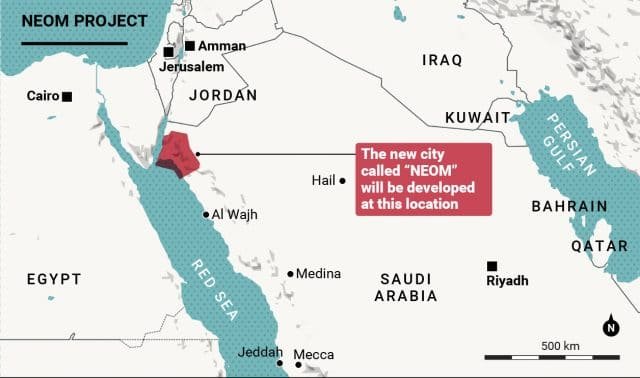
The future Neom complex will be just a few kilometers from the Israeli city of Eilat. It is therefore no surprise that Israel is a major stakeholder in the Neom mega-project, although Prince bin Salman has yet made no mention of it. The Jerusalem Post writes about “correspondence between Arab diplomats and Israeli businessmen confirming that talks are ongoing over economic cooperation, and a number of Israeli companies are already selling cybersecurity tools to the Saudi government.” For the moment, these negotiations are operating under the table. As the Jerusalem Post puts it, the project is “a blow to the decades-long Arab League boycott of the Jewish state.”[2]
Neom covers the biblical Midian
There is one aspect missing in all the reports and promotional material produced about the Neom project, and I want to draw attention to it: Neom will occupy precisely the area known in the Bible—and in all ancient sources—as Midian. The significance of this region in biblical history is impossible to overestimate. Few people know it, but it is actually the birthplace of the religion of the Hebrews. Let me explain.
“Yahweh came from Sinai,” the Bible says (Deuteronomy 33:2 and Psalms 68:18). Sinai, with its Mount Sinai or Mount Horeb, is where Moses first encountered Yahweh, who ordered him to go back to Egypt and free his people; it is in Sinai that Moses brought them back; and it is from there that, two years later, on Yahweh’s order again (received on Mount Horeb), he set off with them towards Canaan.
The Bible leaves no doubt that Sinai was in Midian, that is, in northwest Arabia. In the Exodus story, when Moses flees Egypt “into Midianite territory” (2:15) after having killed an Egyptian, he is hosted by a Midianite priest—first named Reuel (2:18) then Jethro (3:1)—who eventually gives him his daughter Zipporah, with whom Moses will have two sons. It is while grazing his father-in-law’s flocks that Moses finds himself near Mount Horeb, “to the far side of the desert” (3:1). The idea that Moses walked more than 300 kilometers around the Gulf of Akaba to graze his flocks in the Egyptian Sinai is preposterous. Sinai/Horeb is clearly within the herding grounds of the Midianite Jethro.
It was probably for geopolitical reasons that the early Christian Church, sometimes after the conversion of the Roman empire, located Sinai in the Egyptian peninsula: the Egyptian location was within control of the Roman empire, whereas the Arab location was not. But even Paul the Apostle knew that “Sinai is a mountain in Arabia” (Galatians 4:25).
Locating Mount Horeb/Sinai in today’s Saudi Arabia is not a new idea. Charles Beke was among the first to develop the full argument (Sinai in Arabia and of Midian, 1878). The idea has gained support from a growing number of scholars, including Hershel Shanks, editor of the Biblical Archaeology Review, and Frank Moore Cross, Hebrew professor at Harvard.
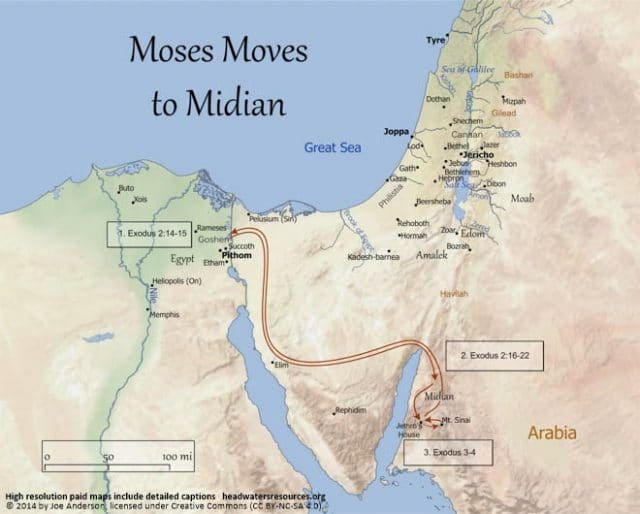
The precise location of Mount Horeb/Sinai can be deduced from phenomena witnessed by the Hebrews there:
“Now at daybreak two days later, there were peals of thunder and flashes of lightning, dense cloud on the mountain and a very loud trumpet blast; and, in the camp, all the people trembled. Then Moses led the people out of the camp to meet God; and they took their stand at the bottom of the mountain. Mount Sinai was entirely wrapped in smoke, because Yahweh had descended on it in the form of fire. The smoke rose like smoke from a furnace and the whole mountain shook violently. Louder and louder grew the trumpeting. Moses spoke, and God answered him in the thunder” (Exodus 19:16-19).
If Mount Horeb shakes, rumbles, smokes and spits fire like a volcano, then it should be a volcano, as Beke was the first to remark (Mount Sinai a Volcano, 1873). Northwest Arabia, where Midian is located, happens to be a volcanic area, unlike the Egyptian Sinai; volcanic activity was still documented there in the Middle Ages.[3] Some scholars have identified Mount Horeb as Hala-’l Badr, a cinder cone type volcano culminating at 5500 feet (1692 meters) about 150 kilometers south to Tabuk.[4] But the most likely candidates, the one which has already attracted dozens of explorers, is Jabal al-Lawz, whose summit, reaching almost 8500 feet (2580 meters), consists of metamorphic rocks.[5] It is to this volcanic mountain that Google Map will direct you if you type “Mount Horeb in Arabia.”
It happens to be situated right in the middle of the geographical area delineated for the Neom transnational complex. That cannot be a coincidence. We know how important it is for Zionists to possess Jerusalem. Possessing the biblical Sinai must be highly desirable. And, as I have argued, there is no question that it is in Midian. For the moment, this is not widely publicized. My guess is that it will be within a decade, when the new Saudi-Israeli alliance will be official, and when the Neom project sufficiently advanced to start welcoming Israeli tourists. Hell, tourists from all over the Christian and Muslim world! Or so they hope. Since Israelis are very good at excavating biblical artifact, surely they will have discovered, by then, a piece of Moses’s sandal, or perhaps a chunk of the broken Table of the Law in laser-engraved metamorphic rock.

More biblical background
From the biblical viewpoint—which is, as I contend in my book From Yahweh to Zion, the Zionist viewpoint—the emerging Isaeli-Saudi alliance has deep roots. In the Bible, Moses seems to inherit the priesthood from his father-in-law, a “priest” (kohen) who is said to have seven daughters but no son. Moses had never heard of Yahweh before meeting him near the “holy ground” of Horeb, on his father-in-law’s territory. After coming back from Egypt with the Hebrews, he is met again by Jethro who “offered a burnt offering and other sacrifices to God; and Aaron and all the elders of Israel came and ate with Moses’ father-in-law in the presence of God” (18:12). It is Jethro’s daughter who once appeases Yahweh’s anger against Moses, by circumcising their son with a flint (4:24-26). It is Jethro who instructs Moses on how to rule over the Hebrews by instituting tribal judges (Exodus 18:19-25). Assuming this story to be archaic, German historian Eduard Meyer in 1906, and many others since, have argued that the cult of Yahweh originated as a shoot of Midianite religion. Swiss scholar Thomas Römer is, today, one of the leading proponents of this “Midianite hypothesis.”[6]
From the Exodus narrative, two different stages can be identified in the story of Yahweh and the Hebrews. First, Yahweh asks Moses to bring them back from Egypt to Sinai: “After you have led the people out of Egypt, you will worship God on this mountain” (3:12). At this stage, Yahweh says nothing of conquering Canaan. Moses must simply declare to the Israelites that he is sent by “the god of your ancestors” (3:16) to guide them to Midian. The implication here is that their ancestors are from Midian, just like Yahweh. It is only two years after settling in Midian that Moses receives a new order to bring them (603,550 males over twenty years old, not counting the Levites, according to Numbers 1:44) to Canaan, the Promised Land. Moses tried to recruit his father-in-law: “You know where we can camp in the desert, and so you will be our eyes. If you come with us, we shall share with you whatever blessings Yahweh gives us” (Numbers 10:31-32). Jethro seems to have refused, and the Midianites who did not join the expedition later became the Hebrews’ most hated enemies, as recounted in Numbers 31.
If we follow this theory,[7] Yahwism turns out to be the religion of a confederation of mostly proto-Arab tribes who, perhaps after returning to Midian from a period of exploitation under Egyptian rule, set out to conquer lower Syria, a land “flowing with milk and honey” (Numbers 13:27). This scenario is consistent with the most likely etymology of the Hebrews’ name, as deriving from the word Habiru, by which Egyptians designated nomadic wanderers or refugees from the East.[8] In the Bible, the Israelites are called “Hebrews” only by Egyptians (14 times in Exodus) and Philistines (8 times in 1Samuel). In Exodus 1-15, the term is applied to Jacob’s tribe settling in Egypt.[9]
The Bible actually gives Abraham as common ancestor to the Midianites, the Kenites, the Moabites, the Edomites, and the Amalekites, all predominantly nomadic peoples whose arid lands are all situated between Arabia and Judea. According to Islamic tradition, “Jewish tribes” had been living in the Hejaz since the time of Moses,[10] and orientalist David Samuel Margoliouth remarks that they bore recognizably Arab name.[11]
Israelis—who insist on being the Hebrew’s offspring—seem to believe it is time for them to get back to Midian. By which they mean to get back Midian (once they will have it built by the Saudis, they will change the locks). Forget Jerusalem: the New World Order will radiate from Neom, “humanity’s next chapter,” as the promotional video claims.[12] Or will it?
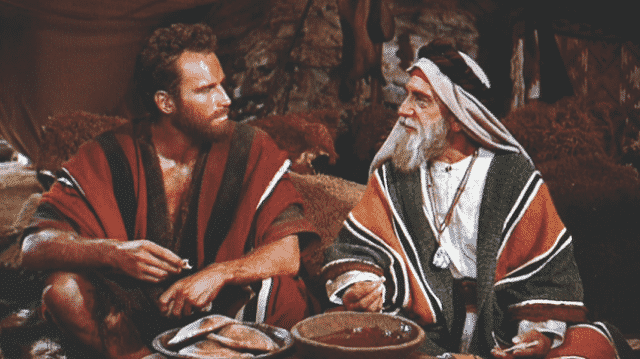
[1] https://www.theatlantic.com/international/archive/2018/04/mohammed-bin-salman-iran-israel/557036/
[2] www.jpost.com/Business-and-Innovation/Israeli-companies-likely-talking-to-Saudi-Arabia-about-500-bil-smart-city-508429
[3] Colin Humphreys, The Miracles of Exodus: A Scientist’s Discovery of the Extraordinary Natural Causes of the Biblical Stories, HarperOne, 2003.
[4] Jean Koenig, « Le Sinaï, montagne de feu dans un désert de ténèbres », Revue de l’histoire des religions, 1965, vol. 167, n°2, pp. 129-155, sur www.persee.fr/doc/rhr_0035-1423_1965_num_167_2_8161
[5] Larry Williams, The Mount Sinai Myth, Wynwood Press, 1990; Howard Blum The Gold of Exodus: The Discovery of the True Mount Sinai, Simon & Schuster, 1998.
[6] Thomas Römer, “Le dieu Yhwh: ses origines, ses cultes, sa transformation en dieu unique,” conférences au Collège de France, 2011-2012, sur www.college-de-france.fr/
[7] As recently propounded by Swiss scholar Thomas Römer in his lectures in the Collège de France, 2011–2012, on www.college-de-france.fr/.
[8] Karl Budde, Religion of Israel to the Exile, Putnam’s Sons, 1899 (archive.org), pp. 5-11.
[9] Niels Peter Lemche, The Israelites in History and Tradition, op. cit., pp. 58-60.
[10] Gordon D. Newby, A History of the Jews of Arabia, University of South Carolina Press, 2009.
[11] David Samuel Margoliouth, Relations Between Arabs and Israelites Prior to the Rise of Islam: The Schweich Lectures 1921, Oxford UP, 1924 (archive.org).
[12] http://discoverneom.com/
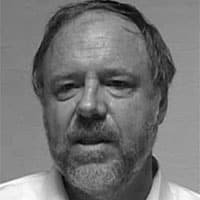

Dr. Kevin Barrett, a Ph.D. Arabist-Islamologist is one of America’s best-known critics of the War on Terror.
He is the host of TRUTH JIHAD RADIO; a hard-driving weekly radio show funded by listener subscriptions at Substack and the weekly news roundup FALSE FLAG WEEKLY NEWS (FFWN).
He also has appeared many times on Fox, CNN, PBS, and other broadcast outlets, and has inspired feature stories and op-eds in the New York Times, the Christian Science Monitor, the Chicago Tribune, and other leading publications.
Dr. Barrett has taught at colleges and universities in San Francisco, Paris, and Wisconsin; where he ran for Congress in 2008. He currently works as a nonprofit organizer, author, and talk radio host.
ATTENTION READERS
We See The World From All Sides and Want YOU To Be Fully InformedIn fact, intentional disinformation is a disgraceful scourge in media today. So to assuage any possible errant incorrect information posted herein, we strongly encourage you to seek corroboration from other non-VT sources before forming an educated opinion.
About VT - Policies & Disclosures - Comment Policy




Another very telling feature of the chapter 19, is the repeated mention of the 3rd day. Bring the people on the 3rd day it says. Well, the 18th day of Qanil and hexagram 18 specifically states , ‘wait 3 days” or the ” 3 days of contemplation before action.”. So this is days 18, 19 , and 20, then on Batz, the first day, is when the contemplation is over and the cycle starts anew. So, in the work of comparative text, chapter 19 Exodus affirms in many ways that is a multi cultural work specifically speaking of Day 19. The fog,or smoke, the ceremony at the mountain, waiting 3 days, thunder, the whole nine yards. The list of examples of people born on the day, that exemplify this are overwhelmingly conformational as well. Perhaps closest to home is VT’s own Steve Robertson who leads the people to sing in unification. Toj is the stage, and the Ears is the body part. So when a performer comes, they are alone on the stage, but the ears are too numerous to count. Another example is Lord Rayleigh who wrote the college text , “The Theory of Sound”. Roger Payne also, who studied echolocation in Bats and Whales. The precise animals used in representing the space which contains the 3 days. on and on into the thousands , Chapter 19 is precisely where it should be, and it is not history, it is a descriptor known to many cultures for the 19th day.
The precise usage of the knowledge for priests, is the 18th day, the issue becomes clear. The 19th day, is the ceremony to the place (whatever place of ceremony is the custom), and the issue is heard. 2 days later is the best day to receive the answer. The 7 day work week is a disruption to this natural cycle.
Chapter 19 Exodus is Day 19 of the 20 days, I-Ching hexagram # 19, and view # 10 of the Additional 10 views of Mt Fuji, which combines 19 and 20 of the 20 days. Hokusai sees it as a company of men going up to the mountain for ceremony, indicated by the presence of horses, but the men carry the load. As day 19 is in closest proximity to the 3rd decan of the 36 in the combined calendars, View # 3 of the 36 Views also applies and calibrates the position, in that Hokusai paints the only view of Mt Fuji showing thunder and volcanic activity. I-Ching hexagram # 19 has quite simply ” advance “, or “advance in company” and “advance in the highest form”. This is the essence of Toj, the 19th day. It is ceremony itself. It is the advance to the stage and the subject is heard. The body part is the ears. It is the day of listening, so, the voice or sound is from the subject of the advance.
Comments are closed.